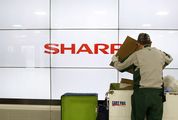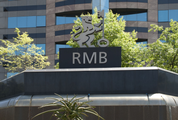ANDREW Reeve rides a bicycle, works in London’s East End and enthuses about the taste of fresh versus six-month-old beer. "I’d describe myself as an undercover hipster — a hipster without the pretentiousness," he says.
Reeve set up HonestBrew four years ago to sell craft beer over the internet. Since launching, it has raised £650,000 from investors, and sales in December were 10 times higher than a year earlier.
Reeve stresses that his customer base is far broader than a single category, but there is no doubting the economic force of hip consumers in at least the past five years, especially as they are prepared to pay more for higher quality.
"People are making a choice about how they spend their money. Are millennials spending more of their income on food compared to the previous generation? Anecdotal evidence suggests they are," Rabobank analyst Nick Fereday says.
Growing demand by younger consumers for craft beer demonstrates their rejection of big commercial food and drinks companies. Despite commanding a significant premium over mainstream lager, sales of craft beer have risen exponentially in the past decade to account for 19% of the value of the overall US beer market, taking share away from industry giants, Budweiser and Miller Lite.
The trend has spread to the spirits industry, where craft gin and vodka and US whiskies are enjoying a resurgence.
One beneficiary of the cocktail boom is Fever-Tree, which charges premium prices for its mixers and tonic water by using high-quality ingredients from around the world.
Fever-Tree’s sales have more than doubled since 2013 to just less than £60m. That is in stark comparison to Diageo, which produces global brands such as Johnnie Walker scotch and Smirnoff vodka, and last week reported sales growth of 2% in the second half of last year — its highest growth rate in years.
"We definitely overindex in sales to under 34-year-olds. Our audience is interested in quality, taste and an interesting product they can talk to others about," says Saskia Meyer, Fever-Tree’s MD.
...
MEN’s grooming products including beard balm, are also riding high on hipster demand. Sales of these products rose to $35.4bn in 2014, an 8% increase over five years, according to Euromonitor.
Now hipster products are spreading beyond urban centres such as Brooklyn, San Francisco and London’s Shoreditch, where they originated. Even mainland China imports a lot of its hipster culture, often from South Korea.
Such is their influence, hipsters are also having a marked effect on neighbourhoods, says Byron Carlock, PwC’s real estate leader.
"Quality of life drivers are really evident. It’s creating a different vibe for these neighbourhoods," he says, pointing to the alternative art scenes they create, foodie shops and the sprouting of small, one-of-a-kind stores. That in turn, encourages employers to follow them.
Douglas McWilliams, economist and founder of the London-based Centre for Economic and Business Research, tried to put a value on the economic effect of hipsters and other millennials after discovering that more new businesses had been created within two years in a single London East End postcode — EC1V — than in the whole of Manchester and Newcastle.
In his book, Flat White Economy, named after the milky coffee favoured by "advanced techie geeks, marketing people (and)creative types", he forecast that one-third of the UK’s economic output will depend on the digital industry by 2025.
"Hipsters don’t have many dependants. They’ve got identifiable spending patterns and homogenous tastes. But they don’t want others to copy them, so they keep up by changing their tastes, by moving on to the next things," says McWilliams. "You have to watch that if you are a consumer products company."
Big food and drinks companies have been trying to get in on the act in two ways: making their own products more appealing to hipsters and millennials, and buying up brands these consumers like, even though this could be the touch of death for an acquired brand.
Kraft, Nestlé, Hershey and General Mills have all made pledges on the removal of artificial colours and preservatives from some of their products. General Mills has introduced a gluten-free version of its Cheerios cereal. Anheuser-Busch InBev, the Budweiser brewer, has acquired seven craft brewers including Goose Island, in the past four years. Sales of Goose Island have risen as the firm has introduced it to a wider base of drinkers.
But analysts warn that being part of a multinational, however, inevitably reduces the hipster cache.
"If a mainstream company is considering purchasing you, you’re probably big enough to be on the edge of the average hipster’s chopping block anyway," says Tim Barrett, an analyst at Euromonitor.
...
WHEN two hipster coffee firms — Stumptown and Intelligentsia — were bought out by JAB, a large European holding company that is taking on Nestlé in the coffee segment, the owners of both were quick to try to reassure their loyal customers that the new ownership would not alter the coffee or the brand. Sales at Kashi, the US natural food business, increased strongly after it was bought by Kellogg in 2000, but then went into sharp decline, partly because of a backlash by Kashi fans against Kellogg’s stance on genetically modified foods.
Even McDonald’s has entered the market by trialling a new concept at a branch with a clinical modernist design and open kitchen in central Hong Kong. Quinoa salad, single-origin coffee beans and customised burgers served on wooden chopping boards are designed to tap into the MacBook Air-carrying, skinny-jeans wearing demographic.
For Jonathan Openshaw, editor at The Future Laboratory, a London-based consultancy, this signals that peak hipster has been reached. Today, there are virtually no big brands that have not hijacked hipster buzzwords to describe their products.
"When McDonald’s boasts about artisanal chicken, you know the message has gone awry. The language built around hipsters — ‘authenticity’, ‘artisanal’, ‘heritage’, ‘bespoke’, ‘crafted’ — have become empty, hollowed-out words that consumers are blocking out."
He points to a mounting backlash against hipster-appropriated messages. South African brewer, Garagista, lampooned the trend with a campaign that had a tagline: "Every time you drink a garagista, a hipster’s band goes commercial."
Hipsters are becoming less amenable to taking authenticity claims on trust, but for now, the hipster-inspired trend is likely to continue. The test, says Fereday, could come in the next recession. "Will they still be prepared to pay more? Or will they return to traditional food?"
• (c) Financial Times Limited 2016

Hipsters are prepared to pay more for quality and firms are trying to get in on the act by making their products more appealing. Picture: ISTOCK
ANDREW Reeve rides a bicycle, works in London’s East End and enthuses about the taste of fresh versus six-month-old beer. "I’d describe myself as an undercover hipster — a hipster without the pretentiousness," he says.
Reeve set up HonestBrew four years ago to sell craft beer over the internet. Since launching, it has raised £650,000 from investors, and sales in December were 10 times higher than a year earlier.
Reeve stresses that his customer base is far broader than a single category, but there is no doubting the economic force of hip consumers in at least the past five years, especially as they are prepared to pay more for higher quality.
"People are making a choice about how they spend their money. Are millennials spending more of their income on food compared to the previous generation? Anecdotal evidence suggests they are," Rabobank analyst Nick Fereday says.
Growing demand by younger consumers for craft beer demonstrates their rejection of big commercial food and drinks companies. Despite commanding a significant premium over mainstream lager, sales of craft beer have risen exponentially in the past decade to account for 19% of the value of the overall US beer market, taking share away from industry giants, Budweiser and Miller Lite.
The trend has spread to the spirits industry, where craft gin and vodka and US whiskies are enjoying a resurgence.
One beneficiary of the cocktail boom is Fever-Tree, which charges premium prices for its mixers and tonic water by using high-quality ingredients from around the world.
Fever-Tree’s sales have more than doubled since 2013 to just less than £60m. That is in stark comparison to Diageo, which produces global brands such as Johnnie Walker scotch and Smirnoff vodka, and last week reported sales growth of 2% in the second half of last year — its highest growth rate in years.
"We definitely overindex in sales to under 34-year-olds. Our audience is interested in quality, taste and an interesting product they can talk to others about," says Saskia Meyer, Fever-Tree’s MD.
...
MEN’s grooming products including beard balm, are also riding high on hipster demand. Sales of these products rose to $35.4bn in 2014, an 8% increase over five years, according to Euromonitor.
Now hipster products are spreading beyond urban centres such as Brooklyn, San Francisco and London’s Shoreditch, where they originated. Even mainland China imports a lot of its hipster culture, often from South Korea.
Such is their influence, hipsters are also having a marked effect on neighbourhoods, says Byron Carlock, PwC’s real estate leader.
"Quality of life drivers are really evident. It’s creating a different vibe for these neighbourhoods," he says, pointing to the alternative art scenes they create, foodie shops and the sprouting of small, one-of-a-kind stores. That in turn, encourages employers to follow them.
Douglas McWilliams, economist and founder of the London-based Centre for Economic and Business Research, tried to put a value on the economic effect of hipsters and other millennials after discovering that more new businesses had been created within two years in a single London East End postcode — EC1V — than in the whole of Manchester and Newcastle.
In his book, Flat White Economy, named after the milky coffee favoured by "advanced techie geeks, marketing people (and)creative types", he forecast that one-third of the UK’s economic output will depend on the digital industry by 2025.
"Hipsters don’t have many dependants. They’ve got identifiable spending patterns and homogenous tastes. But they don’t want others to copy them, so they keep up by changing their tastes, by moving on to the next things," says McWilliams. "You have to watch that if you are a consumer products company."
Big food and drinks companies have been trying to get in on the act in two ways: making their own products more appealing to hipsters and millennials, and buying up brands these consumers like, even though this could be the touch of death for an acquired brand.
Kraft, Nestlé, Hershey and General Mills have all made pledges on the removal of artificial colours and preservatives from some of their products. General Mills has introduced a gluten-free version of its Cheerios cereal. Anheuser-Busch InBev, the Budweiser brewer, has acquired seven craft brewers including Goose Island, in the past four years. Sales of Goose Island have risen as the firm has introduced it to a wider base of drinkers.
But analysts warn that being part of a multinational, however, inevitably reduces the hipster cache.
"If a mainstream company is considering purchasing you, you’re probably big enough to be on the edge of the average hipster’s chopping block anyway," says Tim Barrett, an analyst at Euromonitor.
...
WHEN two hipster coffee firms — Stumptown and Intelligentsia — were bought out by JAB, a large European holding company that is taking on Nestlé in the coffee segment, the owners of both were quick to try to reassure their loyal customers that the new ownership would not alter the coffee or the brand. Sales at Kashi, the US natural food business, increased strongly after it was bought by Kellogg in 2000, but then went into sharp decline, partly because of a backlash by Kashi fans against Kellogg’s stance on genetically modified foods.
Even McDonald’s has entered the market by trialling a new concept at a branch with a clinical modernist design and open kitchen in central Hong Kong. Quinoa salad, single-origin coffee beans and customised burgers served on wooden chopping boards are designed to tap into the MacBook Air-carrying, skinny-jeans wearing demographic.
For Jonathan Openshaw, editor at The Future Laboratory, a London-based consultancy, this signals that peak hipster has been reached. Today, there are virtually no big brands that have not hijacked hipster buzzwords to describe their products.
"When McDonald’s boasts about artisanal chicken, you know the message has gone awry. The language built around hipsters — ‘authenticity’, ‘artisanal’, ‘heritage’, ‘bespoke’, ‘crafted’ — have become empty, hollowed-out words that consumers are blocking out."
He points to a mounting backlash against hipster-appropriated messages. South African brewer, Garagista, lampooned the trend with a campaign that had a tagline: "Every time you drink a garagista, a hipster’s band goes commercial."
Hipsters are becoming less amenable to taking authenticity claims on trust, but for now, the hipster-inspired trend is likely to continue. The test, says Fereday, could come in the next recession. "Will they still be prepared to pay more? Or will they return to traditional food?"
• (c) Financial Times Limited 2016




















Change: -1.46%
Change: -1.32%
Change: -1.02%
Change: -1.11%
Change: -3.27%
Data supplied by Profile Data
Change: 0.34%
Change: 0.45%
Change: -1.46%
Change: 0.00%
Change: 0.66%
Data supplied by Profile Data
Change: -1.76%
Change: -1.79%
Change: -1.81%
Change: -2.27%
Change: -0.46%
Data supplied by Profile Data
Change: -0.54%
Change: -0.31%
Change: 0.20%
Change: 1.26%
Change: 3.36%
Data supplied by Profile Data